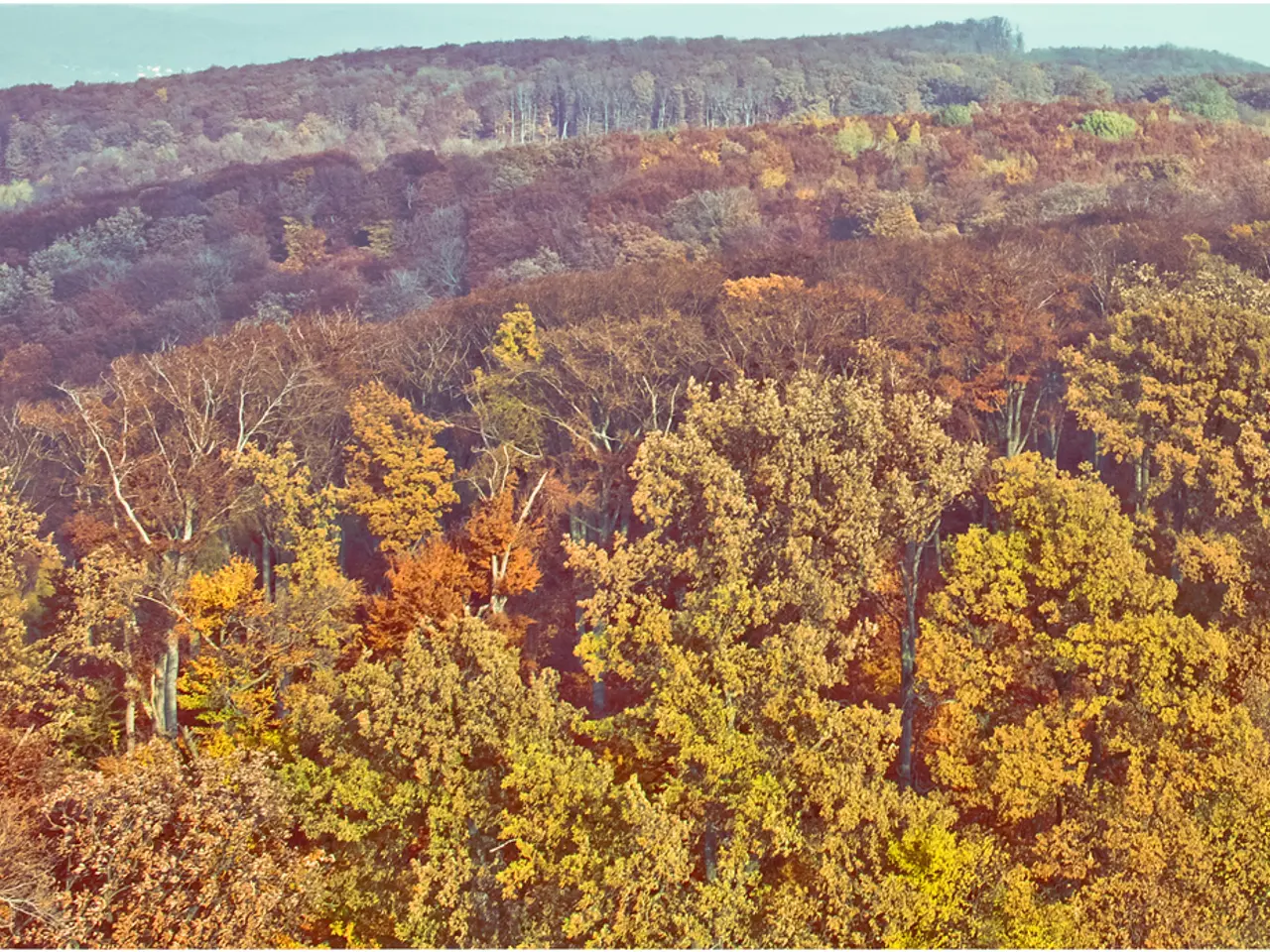Shift in gardening practices: Adapting to grow lemons instead of apples due to climate change conditions faced by horticulturists
Adapting to a Warmer Britain: UK Gardeners Embrace Climate-Resilient Plants
As the British Isles experience warmer temperatures, gardeners across the country are adapting their green spaces to thrive in the changing climate. A shift towards more drought-resistant, hardy, and climate-resilient plants is becoming increasingly popular, as gardeners look to create resilient gardens that can withstand hotter, drier summers.
One such initiative is the use of drought-resistant plants from warmer regions, such as South America and the Mediterranean. By incorporating these species into their gardens, gardeners can maintain garden biodiversity and reduce water demand, ensuring their gardens continue to flourish despite the rising temperatures. Research institutions like Kew Gardens are also conducting tests to identify which trees and plants, including fruit trees like apples, will tolerate future UK climates.
Box hedging, traditionally made from boxwood (Buxus sempervirens), is another area of concern due to rising temperatures and drought. Gardeners are exploring alternative hedge species or more drought-tolerant varieties to maintain hedging structures. Though specific alternatives to box are not detailed, the general trend is towards hardier, low-water plants adapted to UK climate shifts.
Hardy trees, including some conifers (e.g., monkey puzzle trees) and succulents adapted to warmer and drier conditions, are being introduced into British gardens to replace less tolerant species and ensure long-term garden survival. Perennial plants with extensive root systems are also favored for their ability to store carbon, reduce soil erosion, and enhance water retention, making them ideal for climate-smart gardening practices.
Historic gardens are experimenting with spatial segregation, creating "winter sections" for wetter conditions and "summer areas" for drought-tolerant species, to maximize resilience through seasonal climate fluctuations.
UK gardeners are moving from traditional plant choices towards a mix of drought-hardy native and exotic species, as well as resilient fruit trees, to adapt to increased summer drought and heat, while maintaining garden aesthetics and biodiversity. Ongoing research and experimentation are crucial to identifying suitable apple tree varieties and hedging plants resistant to climate stresses.
Derry Watkins, a nursery owner, is one such gardener embracing the change. She is propagating tender plants and leaving them outdoors to see how they fare, having successfully grown Digitalis canariensis and Eriolarynx australis outdoors. She is sanguine about adapting to the changing climate and is keen to try new things in her garden.
The Ventnor Botanic Garden on the Isle of Wight has recently planted the first citrus grove in the UK, with conditions now mild enough to support these tropical fruits. The Horniman Museum gardens are also moving their Prehistoric Garden due to the inability of tree ferns to cope with the current location.
David Knott, a curator at the Royal Botanic Garden, Edinburgh, is concerned about climate extremes and their impact on the plants they grow. Wayne Williams, head gardener at Ventnor Botanic Garden, has planted a range of lemons, oranges, grapefruits, Buddha's hand citrus, and a rare caviar citrus, demonstrating the potential for these fruits to thrive in the UK's changing climate.
James Hitchmough, based in Somerset, is conducting a study of climate predictions before planting his new garden. He suggests that things with big soft leaves may struggle in the south, but could grow well in the northwest. This advice underscores the importance of understanding local climate conditions when choosing plants.
In conclusion, UK gardeners are adapting to the challenges posed by climate change by embracing a diverse range of plants that can withstand the increasing heat and drought. Ongoing research and experimentation will continue to identify the most suitable plants for UK gardens, ensuring that our gardens remain vibrant and thriving spaces for generations to come.
[1] Source: The Guardian [2] Source: Royal Horticultural Society [3] Source: BBC News [4] Source: Gardens Illustrated
- Gardeners are turning to drought-resistant plants from warmer regions, such as South America and the Mediterranean, to create climate-resilient gardens that can thrive during hotter, drier summers.
- Research institutions like Kew Gardens are identifying trees and plants, including apple trees, that will tolerate future UK climates.
- Box hedging, made from boxwood, is a concern due to rising temperatures and drought, and gardeners are exploring alternatives or drought-tolerant varieties.
- Hardy trees, such as monkey puzzle trees and succulents, are being introduced into British gardens to replace less tolerant species and ensure long-term garden survival.
- UK gardeners are shifting towards a mix of drought-hardy native and exotic species, as well as resilient fruit trees, to adapt to increased summer drought and heat, while maintaining garden aesthetics and biodiversity.
- Ongoing research and experimentation are essential to identify suitable apple tree varieties and hedging plants resistant to climate stresses, ensuring UK gardens remain vibrant and thriving spaces in the future.




